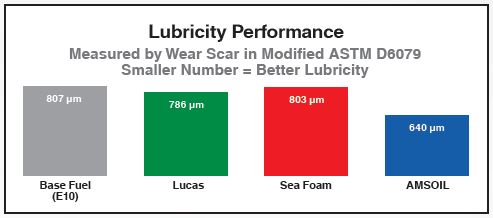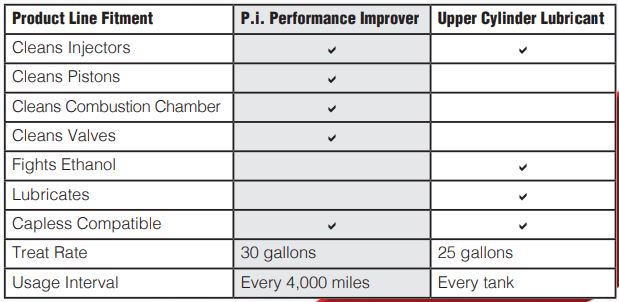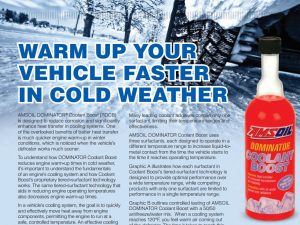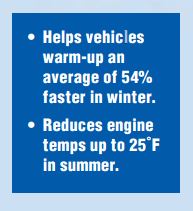AMSOIL UPPER CYLINDER LUBRICANT: I use it and it works!
Now on the market for about a year: AMSOIL Upper Cylinder Lubricant (UCL) is the latest addition to the gasoline additive lineup. It delivers more lubricity than the competition and battles ethanol-related corrosion.
Fuel Additive Product Overview

Plus, it really works. AMSOIL Upper Cylinder Lubricant delivers 18 percent more lubricity than Lucas* and 20 percent more than Sea Foam* for better retention of horsepower and fuel economy. ¹
Inhibits Corrosion
Upper Cylinder Lubricant uses potent corrosion inhibitors to coat metal surfaces, block out moisture and stop deterioration before it starts. This is particularly important when using gasoline that contains ethanol due to its propensity to attract water and hasten corrosion. Inhibiting corrosion maximizes component life and reduces wear in the engine’s top-end to guard against compression loss and maintain optimum power.
Keeps Injectors Clean
Upper Cylinder Lubricant contains detergent additives designed to maintain injector cleanliness. It’s designed to work in concert with AMSOIL P.i. Performance Improver (API) to maintain injector and combustion-chamber cleanliness, retain fuel-economy and performance gains and maximize component life.
Capless-Compatible Packaging
The AMSOIL Upper Cylinder Lubricant bottle is fully compatible with capless fuel systems. Many new vehicles have replaced traditional fuel caps with capless systems. The threads on most bottles restrict them from opening the flap inside the fuel neck and also make removing the bottle difficult. Our packaging makes it easy to insert, pour and remove the bottle.
¹ Based on independent testing of AMSOIL Upper Cylinder Lubricant, Lucas Upper Cylinder Lubricant and Sea Foam Motor Treatment obtained on 02/13/2019 using the ASTM D6079 modified for use with gasoline.
User Comments:
I’ve been using this for almost a year now. In my Ford Focus which is the 2.0 non-turbo I can now use 10% ethanol and get over 40 MPG! I drive from Sioux Falls to Omaha and back often so I can see a difference. It seems the only logical reason this happens is the better lubricity in the head and cylinder ring area. There must be a good amount of friction there. And the parts of the lubricant perhaps seal the rings and valves better as well as the valve stem.
As soon as I get 1000 miles on my Corvair (new engine and heads) I’ll try this as there is even greater friction on horizontal cylinders. It seems to sort of work like lead once did.
If you are going on a long trip keep this in the tank for maximum efficiency. The upper cylinder areas need lubrication. Adding this to the fuel relieves more stress from the engine thus better long term efficiency.
The best way to buy is by the case reducing the price low enough to only cost pennies per tank of gasoline. Thus we keep several cases in stock for your use.
Find out more about this newer AMSOIL product Upper Cyl Lube!




